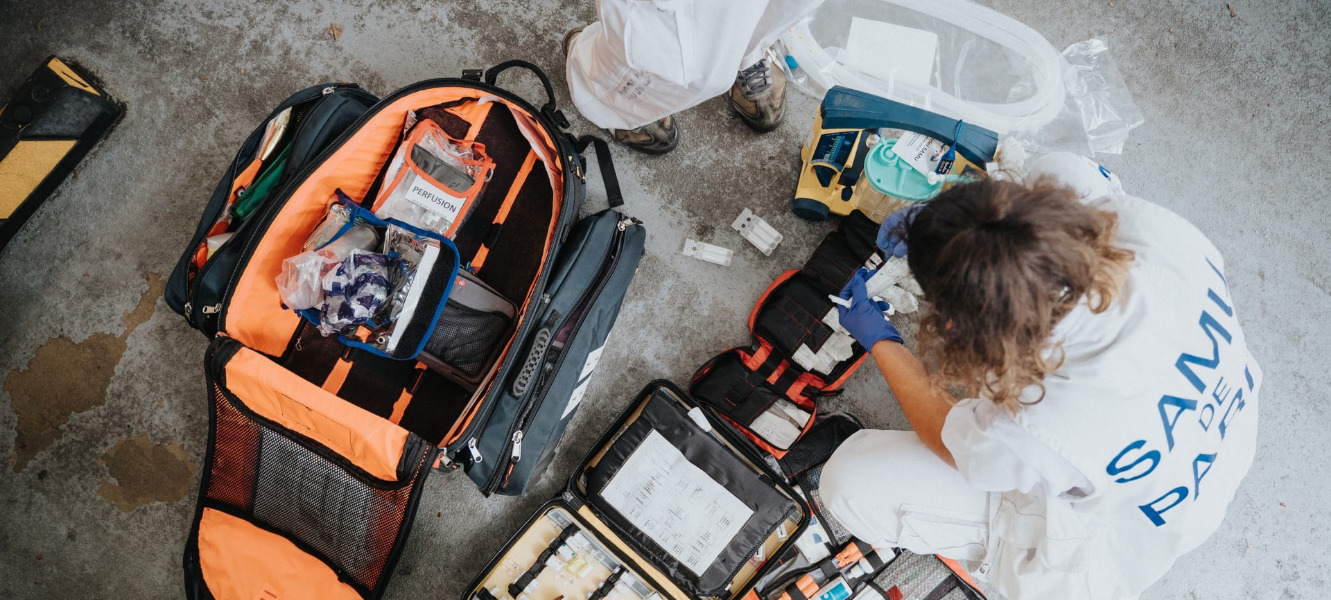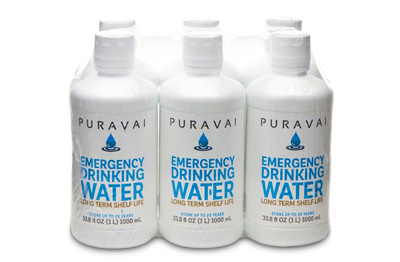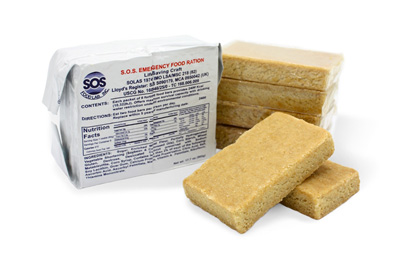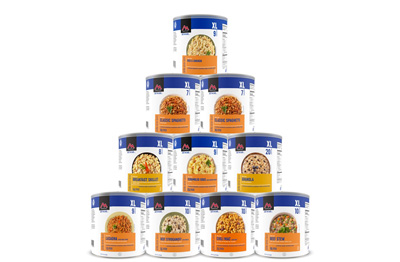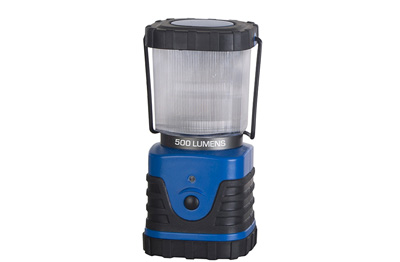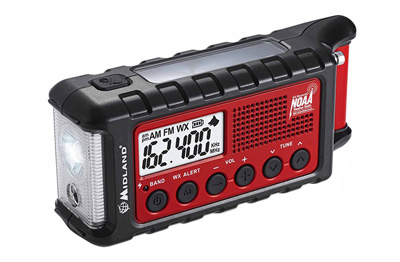What is an Emergency Survival Kit?
Saturday, November 20, 2021
It’s not a question of if but when you’ll need an emergency survival kit. Emergencies are unpredictable, but there are many things that can be done beforehand to prepare for one.
Ensuring that you have a well-stocked
emergency survival kit before a disaster strikes increases your chances of survival.
Items an Emergency Survival Kit Contains
Water and Food
An emergency survival kit in your home should have a stock of food and water. On average, one gallon of water per person per day is what you’ll need. A purification tablet or water filter is also recommended in case the current drinking water supply runs out or becomes contaminated.
The amount of non-perishable food you have should last for at least three days. Meal pouches are a great option to stock up on because they’re portable, but food ration bars often cost less and provide you almost the same nutrition.
Radio
An NOAA weather radio gives you access to a nationwide network of radio stations broadcasting weather updates 24/7. Many radios also serve a dual purpose, working as a flashlight or power bank. It’s also a good idea to have a crank-powered radio in case the power goes out or you don’t have enough batteries.
Flashlight or Lantern
Flashlights and lanterns help you safely navigate your current shelter in case there’s a black out. Crank-powered flashlights are also recommended in addition to your battery-powered or rechargeable flashlight in case these run out of power.
Extra Batteries
Since radios and flashlights rely on batteries or other power sources, keeping extra batteries on hand is helpful in case you don’t have access to power sources for long periods of time.
First-Aid Kit
First-aid kits often contain treatments for small injuries. Additionally, a first-aid kit should also contain any necessary prescription medication. Below is a list of supplies you can add to your first-aid kit:
- Aspirin or ibuprofen tablets
- Antiseptic cleansing wipes
- Hand sanitizer
- Gauze dressing pads
- First aid tape roll
- Emergency blanket
- Triangular sling
- Tweezers
- Scissors
Rope
For times that you might need to evacuate due to hurricanes, earthquakes, or fire, a rope can easily help you rappel or climb to safety. A rope also comes in handy when you need to secure bandages or sling a broken arm.
Multi-Purpose Tool
Your multi-purpose tool should contain features that would be handy for an evacuation.
Tools that double as knives, pliers, wrenches, can or bottle openers, or screwdrivers are perfect for an emergency survival kit. Gadgets that serve double purposes like radios with flashlights or phone chargers are also recommended.
Sanitation and Personal Hygiene Items
It’s important to also include extra clothes, feminine care products, sanitizers or rubbing alcohol, and soap in your emergency survival kit. You can also add extra water that’s not for drinking. This could help you stay hygienic even when you lose access to running water for an extended period of time.
Copies of Personal Documents
An emergency survival kit should also contain copies of personal documents such as insurance policies, birth certificates, passports, identification cards, and bank account records sealed in a waterproof bag or container in case you lose the actual documents to floods or fires.
Family and Emergency Contact Information
Adding emergency contact information to your emergency survival kit is especially important for children. This allows anyone responsible for them to contact their guardian. Additionally, this also allows people to contact the friends and relatives of a person that might be in a dire emergency situation.
Reasons to Have an Emergency Survival Kit
Preparation
As the saying goes, prevention is always better than a cure.
Building a first-aid kit now allows you to worry less about surviving a disaster later. An emergency won’t wait for you to be ready before it happens.
Peace of Mind
An emergency survival kit will go a long way in helping you stay calm and confident, making it easier to take appropriate action. Having all the necessary supplies and tools available at your disposal helps you focus on what you need to do to get help or evacuate.
Zero Dependence
In the event of a natural disaster, emergency teams are often unable to reach everyone in need quickly. In these situations, it's important to be prepared with supplies and knowledge of what to do beforehand. Sometimes, you can only depend on yourself.
Assist in Saving Lives
Being in an emergency doesn’t always mean that you’re the one in need. Having an emergency survival kit available to perform first-aid measures can be a lifesaver to someone else. You might be able to help someone at least until help arrives.
Where to Start Your Emergency Supply Kit
Who is This Kit For?
Take into consideration who and how many individuals would be benefiting from this emergency survival kit. Knowing their specific medical conditions, ages, and potential needs can help you build an emergency survival kit specifically catered to them.
What Kinds of Emergencies Could Affect Me?
An emergency survival kit isn’t always one size fits all. The tools and supplies in your emergency survival kit should also be reliant on the kind of emergency you’re expecting the most. In a region prone to floods, you’d want to stock up on life vests,
while if you live where there are earthquakes, you’d want to have whistles to signal for help.
Kit Storage Locations
Home
It’s important to store your emergency survival kit where it’s accessible by all members of the family. This should also be an area where it’s safe from harsh conditions that could affect the viability of its contents. It could be placed in communal areas in the house like the kitchen or the living room.
Work
We all know that emergency situations don’t wait for anyone, so when one arrives, be prepared to take shelter at work for at least 24 hours until it’s safe to travel. Your emergency survival kit should also be placed at your work area where you can easily access it.
Car
You should have your emergency survival kit filled with food and water as well as safety items such as a flashlight, multi-purpose tool, and emergency contact information for rescue teams. This can be placed in the glove compartment for easy access while you’re in the car.
What is an emergency kit
What is an emergency kit: What should be included?
American,
tornadoes, bank, pencil, bottles, connected, national, following, climate, volunteer, español, aid, find, household may, voluntary, individuals, family documents such, training, diapers, powered, flashlight, types, emergency kit list.
-
Make sure the kit is affordable and within your budget
What are 10 items in a emergency kit, red cross emergency kit list, importance of emergency kit, earthquake emergency kit list, emergency preparedness, earthquake, earthquake preparedness, disaster supply, disaster preparedness.
-
Read reviews of different kits before making a decision
Earthquake disaster, 72 hour kit, starter kit, red cross, survival gear, backpack, ready america,
earthquake bag, items, earthquake emergency, earthquake survival, emergency backpack, emergency, kit, disaster, supplies, kits, water, home.
-
Ask for recommendations from friends or family who have emergency kits
Items, food, family, bag, supply, safety, survival, people, power, aid, list, time, case, things, preparedness, health, disasters, security, needs, products, days, everything, radio, hand, situation, insurance, essentials, bags, card, wedding, life, guide, weather, emergency kit,
survival kit, emergency kits, first aid kit, natural disaster.
-
Do some research online to find the best kit for your needs
Emergency supply kit,
extra batteries, important documents, wedding emergency kit, emergency supplies, natural disasters, red cross, emergency situation, family member, full disclaimer, pro tip.
-
Choose a kit that has a long shelf life and can be easily stored
Medical kit,
waterproof container, garbage bags, specific needs, power outage, duct tape, sunset survival, emergency preparedness kit, several days, disease control, new york, good idea.
-
Consider the size of the kit and make sure it is not too big or too small for your needs
Complete earthquake bag,
3-day emergency kit, emergency kit, bag, survival kit, security, first aid kit, waterproof, erie, disaster, insurance, credit card, earthquake, flashlight, batteries, backpack, home security, preparedness, water.
How can you be prepared for a event of an emergency?
bag, emergency, emergency kit,
emergency kits, first aid, first aid kit, first aid kits, first-aid kit, first-aid kits, kit, kits, survival, survival kit, survival kits, what is an emergency kit, fema, floods, earthquakes, clothing, preparedness.
What are some tips for using an emergency kit?
Wildfire, english, history, français, donate, coronavirus, flash, skills, nederlands, materials, manual can opener, languages, survival kit supplies, blanket, supplies kit, traveler's, assemble, organizations, recovery, personal hygiene, date.
The benefits of having an first aid kit
What are 10 items in a emergency kit, 14-day emergency kit list, emergency kit items and their uses, red cross emergency kit list, importance of emergency kit,
earthquake emergency kit list, family survival kit, emergency kit, emergency kit meaning, emergency preparedness guide, emergency kit list, 14-day emergency kit list.
What to Include in a disaster supplies kit
Scenario, emergency preparedness, faq, airlines, natural disaster, dentists, emergency planning, dental, emergency supply kit, dental practices,
emergency preparedness, disaster plan, ada, disaster relief, american dental association.
Home insurance, fema, disaster preparedness, security systems, aeds, babyproof, shelter-in-place, medications, occupational safety and health, oral health, emergency, emergency kit list, emergency kit for school, emergency kit for car, emergency kit drawing.
FAQ
What should be included in emergency kits?
Emergency kit and their uses with pictures, red cross emergency kit list, disaster preparedness, bug out, red cross, aid box, earthquake, survival gear,
earthquake emergency, backpack, 72 hour, grab bag, bag checklist.
What are 5 items in an emergency kit?
Secure websites, official websites, person complete change, tightly closed plastic, sturdy carrier, sleeping bags, hand crank radio, pet cash, pocket knife. how to prevent mosquito disease high
What are the top 10 items you would want in an emergency?
Insurance policies, tone alert flashlight, emergency contact information, dust mask, two week supply, emergency supply kit based, united states government, medical records, recommended supplies, car keys.
What is the most important emergency kit?
Additional emergency supplies, local maps cell phone, need in the event, disposable litter trays, plastic utensils paper, medical supplies, basic kit, personal sanitation, bank account records, sleeping bag or warm, bag or warm blanket, store boxed food, official government organization, family members.
What should I store for emergency?
Medication list, Adhesive tape, Extra fuel, baby supplies, basic supplies, medical items, emergency tools, emergency shelter, bleach for water purification, basic survival tools, medical equipment, out bag, prescription medications.
What should I put in my survival backpack?
Spare phone charger, portable battery, power pack, reliable items, internet loss, enough hand sanitiser, enough face masks, emergency kit, first aid kit, batteries, battery, disaster, hygiene, battery powered, debris, soap, phone, infection.
What are the 11 supplies that can you found inside the emergency bag?
Superglue, torch, bag, tools, survival kit, allergic, insurance, erie, clothes, toilet paper, gloves, mind, weather, nappies, wound, evacuation, outdoor cooking, grill, emergency kits, allergies, allergic reaction, disaster supply kit, food allergies.
What is a go bag for emergencies?
Bitten, evacuations,
home insurance, snake bite, superglue, the flu, insurance, phone charger, emergency preparedness, disaster plan, off-grid, crazy glue, solar ovens, disaster relief, Personal hygiene items, Plastic sheeting, paper towels.
Why is emergency kit important?
Warm blanket, Pet food, paper cups, gallon per person,
Cell phone, additional items, Anti-diarrhea medication, Pain relievers, extra water, warm clothing, birth certificates, Rain gear, Prescription eyeglasses, Additional supplies.
How do I make an emergency kit?
Feminine supplies, emergency medical,
emergency car kit, emergency contact, Emergency phone, Emergency reference materials, gallon of water, Bottled water, water supply, Drinking water, baby food, basic survival items, canned food.
What are good non perishable foods?
Mini survival kits,
important family documents, dusk mask, fish hooks, survival skills, complete change, non-perishable food, kit is a collection, waterproof container feminine supplies, portable container sleeping bag, filter contaminated air, sturdy shoes fire extinguisher, noaa weather radio, plastic ties, mess kits.
How do you survive a food shortage?
Medication list, Adhesive tape, Extra fuel, baby supplies, basic supplies, medical items, emergency tools, emergency shelter, bleach for water purification, basic survival tools, medical equipment, out bag, prescription medications.
What should you pack in a fire bag?
Additional emergency supplies, local maps cell phone, need in the event, disposable litter trays, plastic utensils paper, medical supplies, basic kit, personal sanitation, bank account records, sleeping bag or warm, bag or warm blanket, store boxed food, official government organization, family members.
What is a first aid kit box?
Teacher emergency, classroom, survival backpack,
natural disasters, kit, emergency, items, supplies, aid, water, disaster, household, food, time, list, home, days, kits, hand, member, pack, power, people, family, needs, life, battery, documents.
How much water should I stockpile?
Case, office, phone, things, bag, fire, batteries, work, supply, products, hygiene, crisis, evacuation, school, place, way, emergency kit, first aid kit, household member, emergency supplies,
important documents, aid kit, survival kit.
What food is best for survival?
Duct tape, basic items, first aid kits, toilet paper, spill kit, office emergency kit, several days, spare batteries, red cross, good idea,
evacuation kit, first aid manual, date copies, personal hygiene products, insect repellent, ring pull.
How do you make a go bag?
Price, family, essentials, case, hours, need, situation, everything, shelter, list, bags, life, range, number, safety, size, warmth, hand, bars, blankets, gerber, day, survival kit, survival kits, emergency kit,
natural disaster, first aid kit, right kit, emergency situation.
What is the most important survival item?
Water purification tablets, many people, car breaks, market today,
right survival kit, mylar blankets, blackhawk survival, water pouches, week survival, deluxe car emergency, perfect kit, enough supplies, wide range, zombie apocalypse, natural disasters.
What is the most important thing to survive?
First aid, food bars, emergency preparedness, emergency kits, long way, first aid kits, survival experts, fire starters, emergency kit, bag, security, survival kit, first aid, disaster, backpack, waterproof, earthquake, erie, insurance, home security.
What are the 5 most important survival skills?
Emergency kit for earthquake,
flashlight, radio, earthquake, tagalog to english, earthquake, disaster, survival, school, clipart, food, family, first aid, cartoon, volcanic eruption, diy, high school, basic, wedding, hurricane, mini, tornado, poster, drawing.
What should be in a girl emergency kit?
Medical, backpack, bag, emergency preparedness, typhoon, middle school, checklist, supply, back to school, fire, simple, kit, emergency, survival, water, kits, food, supplies, items, disaster, people, car, person, aid, home, event, backpack, bag, power.
What should I grab in 5 minutes?
How much cash should I have in my emergency kit?
What is the meaning of emergency kit?
